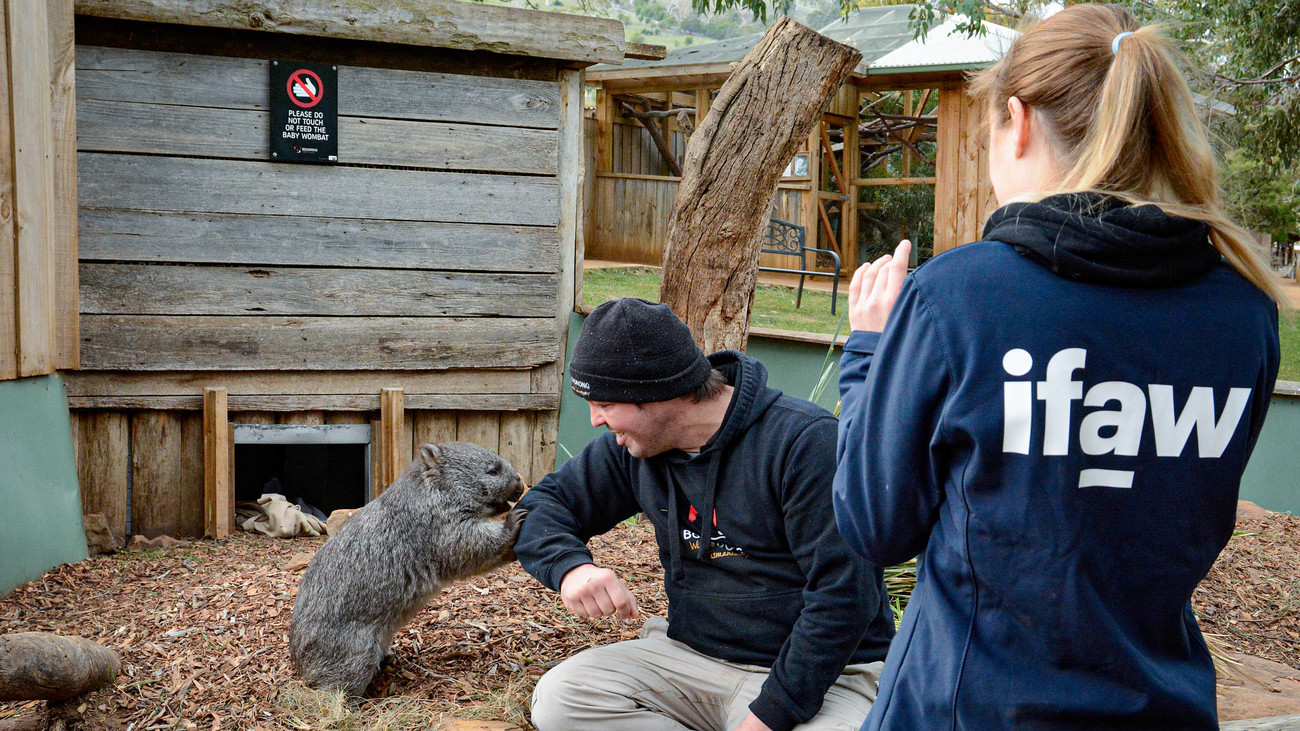Wildlife Rescue - Australia
Australia has one of the highest mammal extinction rates in the worldq & a with our partners at Tasmania’s Bonorong Wildlife Hospital
q & a with our partners at Tasmania’s Bonorong Wildlife Hospital
Bonorong Wildlife Hospital
On any given week in summer, up to 120 animals are treated at Tasmania’s only fully dedicated wildlife veterinary clinic.
From magpies, to wombats, bandicoots and lizards – the team at Bonorong Wildlife Hospital treat any species that come through their doors. Their philosophy aligns with ours – that every individual animal matters for conservation - and for that reason we forged a unique partnership with Bonorong which was crucial in the establishment of the wildlife hospital.
Our partnership and work continue as we fund Bonorong’s essential veterinary staff five days a week. Under the leadership of Greg Irons, the vet team sees up to 30 animals daily during summer and up to 20 in winter.
Since the hospital’s opening in January 2018, they have treated 2,260 animals that have come through their doors – not including the number of animals they have re-checked during that time.
We quizzed Greg and Sanctuary and Wildlife Hospital Manager, Petra Harris, about the ins and outs of the clinic and some of the work they do.

What are the most common injuries or illnesses you see in wildlife?
Sadly, most animals are sick, injured or orphaned as a result of anthropogenic (human) activities. This includes car collisions and entanglement with fishing lines, six-pack rings, bird netting and string.
During spring we see echidnas emerging from torpor and the start of the breeding season with injuries from car collisions or dog attacks. We also see a spike in blue-tongue lizards injured in dog/cat attacks or whipper snipper accidents.
Between April and May we receive a high influx of shearwater fledglings before they start their first northward migration. Most that we see are injured as a result of crash landing on roads due to their inexperience.
What are some of the rarer injuries you see?
Some are caused by natural processes, such as territorial attacks by birds on ravens or magpies or blue tongue lizards being attacked by magpies. We also see sick seabirds as a result of oil spills and wind turbine injuries to eagles.
We sadly see a number of animals each year which have been shot. These are usually large birds of prey.
What was the most remarkable comeback you’ve witnessed in an animal?
Two stories spring to mind.
One is about a wombat called Tina. She came in with a head injury when she was only about one to two kilograms in size. Every time she tried to walk, she’d roll over because of her injury. She was bottle-fed and put in a very flat enclosure. We slowly added steps to build her strength back up. We didn’t think she’d be released back into the wild. But, by the end of her rehabilitation, she could do what any other wombat could do. You’d never be able to tell that she was injured.
The second is about two very small baby Tasmanian devils – Mali and Phoenix. Their mum had been hit by a car but fortunately, they were found straight away inside the pouch. This is important because they didn’t get too cold or dehydrated which makes a huge difference to their chances of survival. Because they were so underweight, we had a strict feeding regime and had to keep them at an ideal temperature. We watched them pull through and survive against all the odds. It’s rare to see Tasmanian devils grow from such a young age. It was a really special experience.
Do you release animals back into their natural habitat?
This is always our number one aim. While we love being able to provide a home for animals that can’t be released, we much prefer seeing them go back to the wild where they belong.
We first asses the animal to see if they can survive. This is where the IFAW hospital is absolutely crucial. Treatment is provided with the intention to release the animal back to the wild. Sometimes, sadly, an animal’s injuries will be fatal, and other times their injuries will mean they can’t survive in the wild. This doesn’t mean the animal is automatically put in captivity. We have to make sure we can provide a suitable habitat and home for that animal and that importantly, it can live a happy life.
How has the COVID-19 pandemic impacted you?
We had to close the sanctuary to the public which meant we were cut off from that funding source for a significant amount of time. This would have severely impacted our ability to continue providing medical assistance and care for injured, sick or orphaned critters if it wasn’t for our important partnership with IFAW.
The funding from IFAW was crucial in keeping our hospital doors open so we could continue rescuing and providing care for injured wildlife.
Related content
Our work can’t get done without you. Please give what you can to help animals thrive.